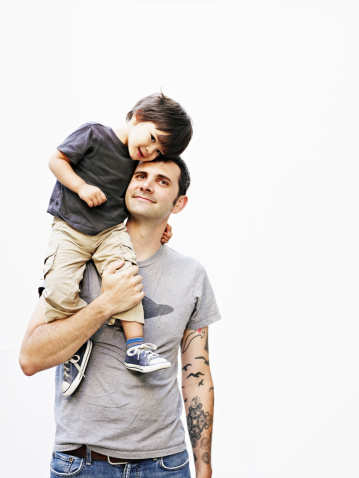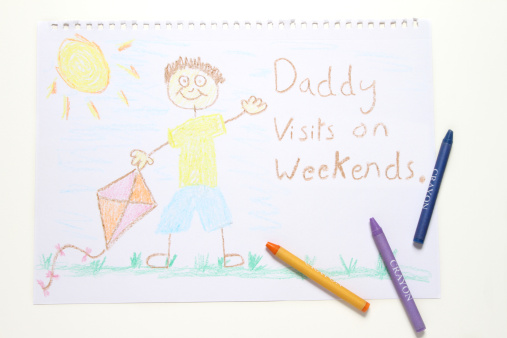 Recently I participated in a case debrief with other members of a Collaborative team. The debrief, or case consultation, is a regular and ordinary part of Collaborative Team Practice. Any team member can request a debrief to get an update or deal with an emerging issue, or they can be regularly scheduled by the neutral coach as part of team practice. I usually don’t think twice about how remarkable these discussions can be. But it is important to occasionally reflect on what makes Collaborative Team Practice uniquely able to tailor problem solving to the needs of clients. The issue we were addressing as a team was how to best support a divorcing couple to deal with hurtful and contentious behavior by extended family. This is not an uncommon concern. It can be difficult for extended family and friends to know how to behave during a divorce, and many default to taking sides. This can aggravate an already painful situation, especially for children who find themselves in the middle when listening to an aunt, uncle, grandparent or other family member who is critical or dismissive of one parent.
This issue had arisen several times while creating a parenting plan. Because parents were working with me as a neutral child specialist, it was possible for us to generate options in an open way, e.g. inviting extended family members to a meeting with me to talk about the goals of Collaborative Team Practice and the importance of keeping kids at the center and out of the middle. Parents and I agreed I should discuss their concerns and potential options with their team.
In the team debrief, the attorneys and neutrals working with this family continued to openly address this issue with a problem solving approach, and more options were generated for supporting our clients and their children. Each team member was able to contribute nonjudgmental, constructive perspective and empathetic support. We shared the commitment to assist our clients through a challenging time. In a different kind of divorce process, it would have been difficult to have such an open discussion about an issue with such potential to be polarizing.
Team debriefs are clearly one of the strengths and value-added dimensions of the Collaborative Team Practice model.
Recently I participated in a case debrief with other members of a Collaborative team. The debrief, or case consultation, is a regular and ordinary part of Collaborative Team Practice. Any team member can request a debrief to get an update or deal with an emerging issue, or they can be regularly scheduled by the neutral coach as part of team practice. I usually don’t think twice about how remarkable these discussions can be. But it is important to occasionally reflect on what makes Collaborative Team Practice uniquely able to tailor problem solving to the needs of clients. The issue we were addressing as a team was how to best support a divorcing couple to deal with hurtful and contentious behavior by extended family. This is not an uncommon concern. It can be difficult for extended family and friends to know how to behave during a divorce, and many default to taking sides. This can aggravate an already painful situation, especially for children who find themselves in the middle when listening to an aunt, uncle, grandparent or other family member who is critical or dismissive of one parent.
This issue had arisen several times while creating a parenting plan. Because parents were working with me as a neutral child specialist, it was possible for us to generate options in an open way, e.g. inviting extended family members to a meeting with me to talk about the goals of Collaborative Team Practice and the importance of keeping kids at the center and out of the middle. Parents and I agreed I should discuss their concerns and potential options with their team.
In the team debrief, the attorneys and neutrals working with this family continued to openly address this issue with a problem solving approach, and more options were generated for supporting our clients and their children. Each team member was able to contribute nonjudgmental, constructive perspective and empathetic support. We shared the commitment to assist our clients through a challenging time. In a different kind of divorce process, it would have been difficult to have such an open discussion about an issue with such potential to be polarizing.
Team debriefs are clearly one of the strengths and value-added dimensions of the Collaborative Team Practice model.  Recently I participated in a case debrief with other members of a Collaborative team. The debrief, or case consultation, is a regular and ordinary part of Collaborative Team Practice. Any team member can request a debrief to get an update or deal with an emerging issue, or they can be regularly scheduled by the neutral coach as part of team practice. I usually don’t think twice about how remarkable these discussions can be. But it is important to occasionally reflect on what makes Collaborative Team Practice uniquely able to tailor problem solving to the needs of clients. The issue we were addressing as a team was how to best support a divorcing couple to deal with hurtful and contentious behavior by extended family. This is not an uncommon concern. It can be difficult for extended family and friends to know how to behave during a divorce, and many default to taking sides. This can aggravate an already painful situation, especially for children who find themselves in the middle when listening to an aunt, uncle, grandparent or other family member who is critical or dismissive of one parent.
This issue had arisen several times while creating a parenting plan. Because parents were working with me as a neutral child specialist, it was possible for us to generate options in an open way, e.g. inviting extended family members to a meeting with me to talk about the goals of Collaborative Team Practice and the importance of keeping kids at the center and out of the middle. Parents and I agreed I should discuss their concerns and potential options with their team.
In the team debrief, the attorneys and neutrals working with this family continued to openly address this issue with a problem solving approach, and more options were generated for supporting our clients and their children. Each team member was able to contribute nonjudgmental, constructive perspective and empathetic support. We shared the commitment to assist our clients through a challenging time. In a different kind of divorce process, it would have been difficult to have such an open discussion about an issue with such potential to be polarizing.
Team debriefs are clearly one of the strengths and value-added dimensions of the Collaborative Team Practice model.
Recently I participated in a case debrief with other members of a Collaborative team. The debrief, or case consultation, is a regular and ordinary part of Collaborative Team Practice. Any team member can request a debrief to get an update or deal with an emerging issue, or they can be regularly scheduled by the neutral coach as part of team practice. I usually don’t think twice about how remarkable these discussions can be. But it is important to occasionally reflect on what makes Collaborative Team Practice uniquely able to tailor problem solving to the needs of clients. The issue we were addressing as a team was how to best support a divorcing couple to deal with hurtful and contentious behavior by extended family. This is not an uncommon concern. It can be difficult for extended family and friends to know how to behave during a divorce, and many default to taking sides. This can aggravate an already painful situation, especially for children who find themselves in the middle when listening to an aunt, uncle, grandparent or other family member who is critical or dismissive of one parent.
This issue had arisen several times while creating a parenting plan. Because parents were working with me as a neutral child specialist, it was possible for us to generate options in an open way, e.g. inviting extended family members to a meeting with me to talk about the goals of Collaborative Team Practice and the importance of keeping kids at the center and out of the middle. Parents and I agreed I should discuss their concerns and potential options with their team.
In the team debrief, the attorneys and neutrals working with this family continued to openly address this issue with a problem solving approach, and more options were generated for supporting our clients and their children. Each team member was able to contribute nonjudgmental, constructive perspective and empathetic support. We shared the commitment to assist our clients through a challenging time. In a different kind of divorce process, it would have been difficult to have such an open discussion about an issue with such potential to be polarizing.
Team debriefs are clearly one of the strengths and value-added dimensions of the Collaborative Team Practice model. 




 Recently I received a referral from Kristin, a client I represented in 2011 in her collaborative divorce. In thanking her for the referral, I took the opportunity to ask her how she was doing. With her permission, her response is reproduced below. At the time of her divorce, Kristin and her husband had two (2) children ages 10 and 12.
Hi Tonda,
Nice to hear from you. I will fill you in with some detail for examples of what can lay on the other side of divorce to help you give hope to your clients going through this painful process. Everyone is doing well here; the kids are doing really well splitting their time between our 2 households (4 miles apart).
Tom and I have a much better relationship now than when we were getting divorced. We talk several times per week and text, usually daily, mostly regarding kids’ stuff like coordinating activities/homework and just general parenting issues. We also try to meet for coffee sometimes to discuss things more in depth like holidays and vacation planning and kids’ milestones. We see each other at their basketball games, tennis matches, orchestra concerts, etc, even holidays sometimes, and usually sit together with our new spouses. Tom and I both got re-married a couple of months ago and Tom and his wife are expecting a baby in March. I married a pharmacist that I met after the divorce and we got married in Yosemite in August of this year. The four of us get along well and the kids get along well with both our spouses so I have nothing but great things to say about the collaborative process. It really helped us to avoid a lot of un-pleasantries and keep our family together without staying married, which is really great.
I hope all is well with you and your practice. I will continue to recommend people look into collaborative divorce as an option. It has been very helpful to us to use the divorce agreement as a structure, but we stay very flexible with rearranging schedules, holidays and vacations etc. We have actually never even had an argument since the divorce. It has helped us build a sense of cooperation and the
Recently I received a referral from Kristin, a client I represented in 2011 in her collaborative divorce. In thanking her for the referral, I took the opportunity to ask her how she was doing. With her permission, her response is reproduced below. At the time of her divorce, Kristin and her husband had two (2) children ages 10 and 12.
Hi Tonda,
Nice to hear from you. I will fill you in with some detail for examples of what can lay on the other side of divorce to help you give hope to your clients going through this painful process. Everyone is doing well here; the kids are doing really well splitting their time between our 2 households (4 miles apart).
Tom and I have a much better relationship now than when we were getting divorced. We talk several times per week and text, usually daily, mostly regarding kids’ stuff like coordinating activities/homework and just general parenting issues. We also try to meet for coffee sometimes to discuss things more in depth like holidays and vacation planning and kids’ milestones. We see each other at their basketball games, tennis matches, orchestra concerts, etc, even holidays sometimes, and usually sit together with our new spouses. Tom and I both got re-married a couple of months ago and Tom and his wife are expecting a baby in March. I married a pharmacist that I met after the divorce and we got married in Yosemite in August of this year. The four of us get along well and the kids get along well with both our spouses so I have nothing but great things to say about the collaborative process. It really helped us to avoid a lot of un-pleasantries and keep our family together without staying married, which is really great.
I hope all is well with you and your practice. I will continue to recommend people look into collaborative divorce as an option. It has been very helpful to us to use the divorce agreement as a structure, but we stay very flexible with rearranging schedules, holidays and vacations etc. We have actually never even had an argument since the divorce. It has helped us build a sense of cooperation and the 


